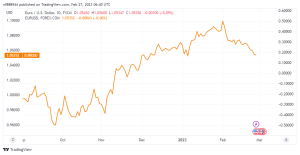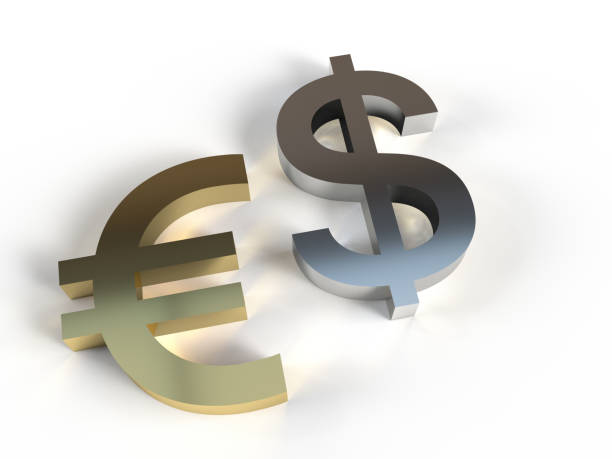EURUSD pair consolidates its recent decline to the lowest level seen since January 6 reached on Friday as it oscillates in a constrained band during the Asian session on the opening day of a new week.
The Greenback is supported by bets on more rate rises by the Fed and a milder risk tone.
US Dollar is now hovering at a seven-week high due to a number of supportive factors, which is hurting the major. Rising US Treasury bond rates are supported by growing expectations that the Federal Reserve would maintain its aggressive policy for a longer period of time in the face of stubbornly high inflation. Also, a generally softer mood in the equities markets, coupled with geopolitical unrest and the threat of an impending recession, contributes to the US dollar’s relative safety compared to its European equivalent.
Prior to the release of the US economic data, the setup is still skewed in favor of bearish traders.
The wagers on more policy easing by stronger-than-expected US Personal Consumption Expenditures (PCE) statistics on Friday cheered the US central bank. In reality, according to data from the US Bureau of Economic Analysis, the headline PCE Price Index rose by 0.6% in January, and the annual rate was 5.4%, up from 0.2% and 5.3%, respectively, in December. Moreover, the Fed’s favored inflation indicator, the Core PCE Index, which excludes food and energy costs, increased 0.6% month over month and was higher than expected at 4.7% from a year ago. The recent encouraging US macro data and this additional indication that inflation isn’t declining as quickly as anticipated should allow the Fed to keep hiking rates.
Investors, though, continue to worry about economic challenges brought on by the ongoing increase in borrowing prices. In addition, concerns over deteriorating US-China ties, the ongoing Russia-Ukraine conflict, and Iran’s disputed nuclear program further weigh on the mood of global risk. More so than the recent hawkish language by several European Central Bank (ECB) policymakers, the aforementioned underlying context dominates it.
The implication of this is that the markets have already completely priced in any future big rate increases by the ECB and that the path of least resistance for the EURUSD pair is downward. The US Durable Goods Orders and Pending House Sales figures are now being watched closely by traders for a new jolt.
EURUSD Technical Analysis
The most recent collapse below the 1.0675–1.0670 confluence support was viewed from a technical standpoint as a new negative trigger. The bottom end of an ascending trend channel, the 50-day SMA, and the 23.6% Fibonacci retracement level of the rally from September 2022 to February 2023 all fell inside the aforementioned range.
Moreover, oscillators on the daily chart are still firmly in the negative zone and have not yet indicated oversold conditions. This in turn strengthens the likelihood of a further decline into the psychological level of 1.0500 before reaching the 1.0450–1.0445 support area, which corresponds to the 100–day SMA and the 38.2% Fibo level.

For the EURUSD pair, the latter should serve as a solid support; if it is convincingly breached, an expansion of continual decline following this month’s prior multi-month peak. On the other hand, attempts at recovery are more likely to run against tough opposition close to the 1.0600 level.
Any further increase may be viewed as a buying opportunity and be restrained close to the 1.0675–1.0680 confluence support breakpoint. Yet, any further purchasing might set off a short-covering move and push the EURUSD pair over the round number at 1.0700 in order to test the next significant barrier close to the supply zone of 1.0770 and 1.0780. The 1.0800 mark is next, and if it is overcome it should offset the short-term bearish picture and open the door to some significant upside.









